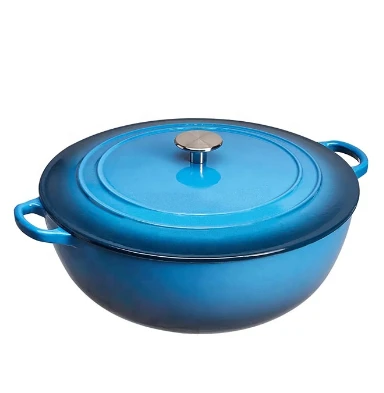
Is Cast Iron a Superior Choice for Cooking and Kitchen Use
Is Cast Iron Better? An In-Depth Look at the Benefits and Drawbacks
When it comes to cookware, the debate over materials is often a hot topic among chefs and home cooks alike. One material that frequently surfaces in these discussions is cast iron. Renowned for its durability and heat retention, cast iron has loyal followers who swear by its superiority in the kitchen. But is cast iron really better than other types of cookware? This article will explore the benefits and drawbacks of cast iron to help you make an informed choice.
The Benefits of Cast Iron Cookware
1. Exceptional Heat Retention and Distribution Cast iron is known for its ability to retain heat, which makes it particularly effective for searing meats and frying. Once it reaches the desired temperature, it holds heat remarkably well, allowing for even cooking. This property also means that food can continue to cook after being removed from the heat source.
2. Versatility One of the standout features of cast iron cookware is its versatility. It can be used on the stovetop, in the oven, and even over an open flame. Whether you're baking cornbread, frying chicken, or slow-cooking stews, cast iron can handle it all. This adaptability means fewer pots and pans cluttering your kitchen.
3. Durability With proper care, cast iron cookware can last a lifetime—and even be passed down through generations. This durability is unmatched by most other cookware materials, which can warp, chip, or degrade over time. A well-maintained cast iron skillet can develop a natural non-stick surface, enhancing its cooking performance.
4. Health Benefits Cooking with cast iron can even add a small amount of iron to your food, which may be beneficial for individuals with iron deficiencies. While the amount is not substantial enough to rely on as a primary source of dietary iron, it is a nice perk of using this ancient material.
is cast iron better

The Drawbacks of Cast Iron Cookware
1. Weight One of the most noticeable drawbacks of cast iron cookware is its weight. Cast iron pots and pans can be heavy and cumbersome to handle, which may be a deterrent for some cooks. Maneuvering a full cast iron skillet can be particularly challenging for those who are less physically strong.
2. Maintenance Proper maintenance is crucial for cast iron cookware. It requires seasoning—applying a layer of oil and heating it—to create a natural non-stick surface and to prevent rust. This process can be time-consuming and may not appeal to everyone, especially those accustomed to the ease of non-stick materials.
3. Reactivity Cast iron is reactive with acidic foods, such as tomatoes and citrus. Cooking these types of dishes in cast iron can lead to off-flavors and discoloration. While enameled cast iron provides a solution to this problem, it often comes at a higher cost.
4. Cost While basic cast iron pans are relatively affordable, specialized pieces or enameled versions can be quite expensive. For the budget-conscious cook, this might be a limiting factor when considering cast iron as an option.
Conclusion
So, is cast iron better? The answer ultimately depends on your cooking needs and preferences. If you value durability, heat retention, and versatility, cast iron could be an excellent addition to your kitchen arsenal. However, if you prefer lightweight cookware and lower maintenance demands, other materials might suit you better. Understanding the benefits and drawbacks of cast iron allows you to make a choice that aligns with your cooking style, ensuring that you create delicious meals for years to come.
-
Season Cast Iron Perfectly with GPT-4 Turbo TipsNewsAug.01,2025
-
High Quality Cast Iron Cookware - Baixiang County Zhongda MachineryNewsAug.01,2025
-
Premium Cast Iron Pan: Durable & Perfect HeatNewsAug.01,2025
-
High Quality Kitchen Durable Black Round Cast Iron Cookware Pancake Crepe Pan-Baixiang County Zhongda Machinery Manufacturing Co., Ltd.NewsAug.01,2025
-
Cast Iron Cookware - Baixiang County Zhongda Machinery | Nonstick, Heat ResistanceNewsAug.01,2025
-
High Quality Kitchen Durable Black Round Cast Iron Cookware - Baixiang County Zhongda Machinery | Non-Stick, Heat Retention, DurableNewsJul.31,2025


